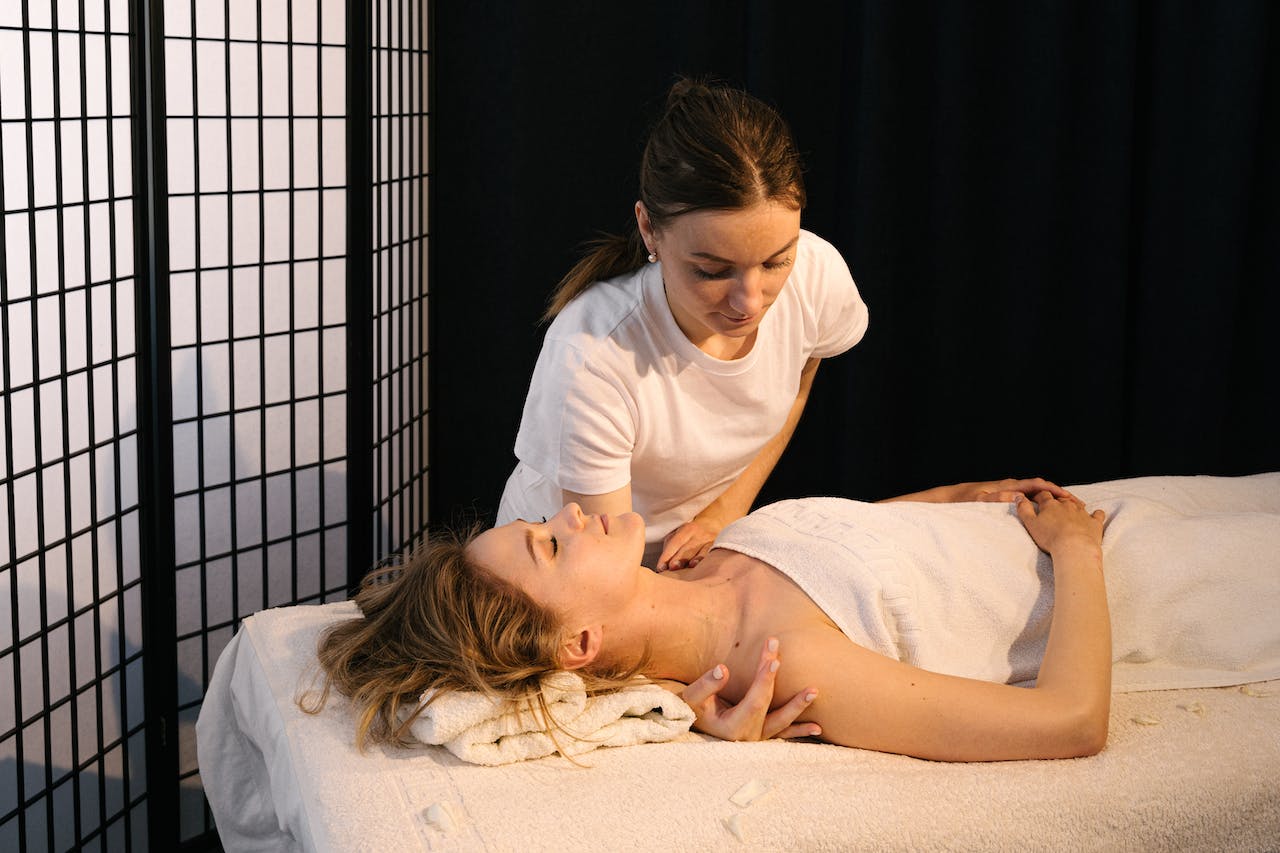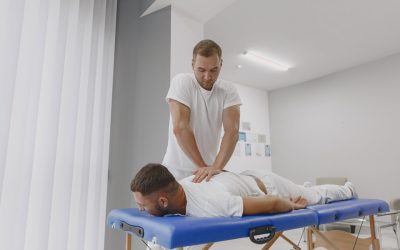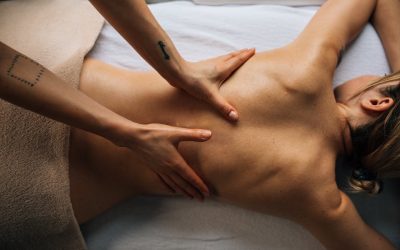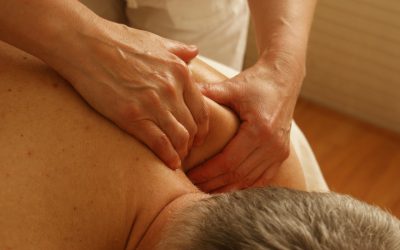Curious about who should consider Rolfing for TMJ disorders? Let’s demystify the ideal candidate. If you’re seeking a holistic approach over quick fixes, Rolfing could be your answer. Unlike temporary solutions, Rolfing aims to address root causes for long-lasting relief. Whether you’ve tried various treatments with little success or prefer natural therapies, exploring Rolfing for TMJ disorders might be beneficial. By focusing on the body’s structural alignment and balance, Rolfing offers a unique perspective on addressing TMJ issues. Ready to delve into a comprehensive approach that prioritizes overall wellness? Discover if you fit the profile of an ideal candidate for Rolfing.
Understanding Rolfing Structural Integration
Rolfing Structural Integration (SI) focuses on the structure of the physical body, aiming to realign and balance the entire system. It works on the connective tissues to enhance posture, movement, and overall well-being.
Rolfing SI operates on the belief that when the body’s structure is aligned properly, it functions optimally. By manipulating the fascia, a connective tissue surrounding muscles and organs, Rolfers aim to release tension and restore balance.
Through a series of sessions, Rolfing SI practitioners work systematically through the body’s segments. They aim to address imbalances or misalignments that may have built up over time due to poor posture, injuries, or stress.
The goal is not just to alleviate symptoms but to address the root cause of discomfort or pain. By improving body alignment, individuals can experience better movement patterns, reduced strain on joints, and increased energy levels.
Rolfing SI takes a holistic approach by considering not only the physical aspects but also emotional well-being. Practitioners believe that emotional stress or trauma can manifest in the body as physical tension.
Overview of TMJ Disorders
Individuals experiencing TMJ disorders often endure significant discomfort in their daily activities. The condition can lead to chronic pain in the jaw area, making simple tasks like eating or talking challenging. Moreover, the effects of TMJ disorders can extend beyond physical discomfort, impacting one’s emotional well-being.
Symptoms of TMJ disorders encompass a range of manifestations that can vary from person to person. These may include pain and tenderness in the jaw joint, difficulty chewing or opening the mouth fully, and even clicking or popping sounds when moving the jaw. Such symptoms can significantly disrupt an individual’s quality of life.
Several factors contribute to the development of TMJ disorders. Trauma, such as a direct blow to the jaw or whiplash injury, is a common precipitating factor. changes in the alignment of the jaw joint due to dental issues or habits like teeth grinding can also play a role. Furthermore, underlying issues with the nervous system and connective tissues can further exacerbate TMJ disorders.
Rolfing Purposes and Benefits for TMJ
Rolfing Structural Integration (SI) offers a holistic approach to relieve temporomandibular joint (TMJ) disorders. The hands-on manipulation of soft tissue aims to reduce pain and discomfort associated with TMJ issues. By focusing on the body’s structural alignment, Rolfing SI can help alleviate tension in the jaw muscles.
During a Rolfing session for TMJ disorders, practitioners employ gentle pressure and manipulation techniques. These techniques target the fascia surrounding the jaw area, aiming to release tension and improve mobility. By working on the connective tissue, Rolfing SI can enhance the overall function of the jaw joint.
Individuals experiencing TMJ disorders may find long-term relief through regular Rolfing sessions. The cumulative effects of Rolfing SI can lead to improved jaw function, reduced pain levels, and increased range of motion. Over time, patients may notice enhanced overall well-being and decreased reliance on pain medication.
Ideal Candidates for Rolfing Therapy
Rolfing therapy is beneficial for individuals seeking relief from TMJ disorders. Musicians, children, and individuals with pelvic issues can benefit greatly.
Rolfing SI sessions are especially effective for those experiencing chronic pain in the muscles surrounding the jaw joint. The therapy helps realign the body, relieving tension and promoting overall well-being.
Specific Benefits
- Musicians: Enhance performance by improving posture and reducing muscle strain.
- Children: Address developmental issues early on to prevent future complications.
- Individuals with Pelvic Issues: Correct imbalances that may contribute to TMJ disorders.
Ideal candidates for Rolfing SI are those looking for a holistic approach to treat TMJ disorders. They should be open to hands-on manipulation of soft tissues and committed to multiple sessions.
Rolfing therapy requires active participation from the individual, including engaging in post-treatment exercises and maintaining good body awareness. Candidates must have realistic expectations regarding the time and effort needed for significant improvement.
Precautions Before Rolfing Sessions
Consultation Importance
Before embarking on Rolfing SI for TMJ disorders, it is crucial to prioritize a consultation with a healthcare provider. This step ensures that any underlying health conditions or contraindications are identified and addressed.
Potential Risks
While Rolfing can bring relief for TMJ disorders, there are potential risks to be mindful of. In some cases, individuals may experience discomfort during or after sessions, particularly in areas such as the legs or back. These sensations are normal as the body adjusts to the therapy.
Gradual Progression
To prevent injury and optimize the benefits of Rolfing for TMJ disorders, it’s essential to approach the sessions with patience. The process involves deep tissue manipulation and realignment, which can lead to soreness initially. Ensuring gradual progression can help manage any discomfort effectively.
Hydration and Rest
Proper hydration is key before and after Rolfing sessions. Hydrated tissues respond better to manipulation, enhancing the effectiveness of the therapy. Allowing the body ample time to rest and recover between sessions is vital for optimal results in addressing TMJ disorders.
Post-Session Care
After a Rolfing session targeting TMJ disorders, individuals should prioritize self-care practices. This includes gentle stretching exercises, maintaining good posture, and avoiding activities that may strain the treated areas. These measures support the body’s adjustment post-treatment.
What Rolfing Can Be Sought For
Rolfing is often sought by individuals experiencing TMJ disorders due to its ability to address postural imbalances caused by these conditions. By realigning the body’s structure through targeted manipulation, Rolfing can help alleviate jaw pain and improve overall physical well-being.
Moreover, individuals dealing with chronic pain in areas like the neck, shoulders, and back may find relief through Rolfing sessions. The gravitational field on the body can be rebalanced, leading to improved posture and reduced strain on muscles and joints.
Beyond physical benefits, Rolfing can also provide significant emotional support. Many clients report feeling a sense of release and relaxation during sessions, which can help in managing stress and anxiety. The deep tissue work involved in Rolfing can release stored emotions and trauma, promoting a sense of emotional healing.
Individuals seeking a holistic approach to their health often turn to Rolfing for its ability to promote overall well-being. By addressing both physical and emotional aspects simultaneously, Rolfing sessions can lead to a profound sense of balance and harmony within the body.
Pros:
-
-
- Holistic approach addressing both physical and emotional well-being.
- Versatile in treating various musculoskeletal issues beyond TMJ disorders.
-
Cons:
- May require multiple sessions for lasting effects.
- Not a substitute for medical treatment for severe conditions.
Who Qualifies for Rolfing Treatment
Individuals experiencing TMJ disorders characterized by jaw pain, clicking, or limited movement may benefit from Rolfing SI. The treatment focuses on aligning the body’s structure to alleviate tension in the jaw area.
Those dealing with stress-related TMJ issues could find relief through Rolfing. The therapy’s holistic approach addresses not only physical symptoms but also emotional stress that can contribute to jaw tension.
People with poor posture that affects their jaw alignment might be suitable candidates for Rolfing. By improving overall body alignment, Rolfing can indirectly alleviate TMJ symptoms caused by postural issues.
Individuals with chronic TMJ conditions that have not responded well to traditional treatments may find Rolfing beneficial. The hands-on manipulation techniques used in Rolfing can offer a unique approach to addressing long-standing TMJ issues.
Athletes or sports enthusiasts who frequently engage in activities that put strain on their jaw muscles could consider Rolfing. The therapy can help optimize muscle function and reduce tension, potentially enhancing performance and preventing future TMJ problems.
When to Call Before Booking Your First Session
Before embarking on a Rolfing Structural Integration (SI) journey, it’s crucial to consult with a healthcare professional. This step is especially important if you have any underlying health conditions that may be impacted by the treatment.
It’s recommended to seek advice from your healthcare provider if you have a history of severe back issues, chronic pain, or any recent surgeries. Discussing these aspects beforehand ensures that Rolfing SI is safe and beneficial for you.
Individuals with existing medical conditions, such as temporomandibular joint (TMJ) disorders, should consult their healthcare provider before starting Rolfing SI. This is essential to ensure that the treatment aligns with your specific needs and doesn’t exacerbate any pre-existing symptoms.
If you are currently undergoing treatment for TMJ disorders or any other health issue, it’s advisable to inform both your healthcare provider and Rolfer about your ongoing therapies. Open communication between all parties involved is key to managing your well-being effectively.
If you experience any unusual discomfort or pain during your Rolfing sessions, it’s important to address these concerns promptly. While some level of discomfort can be expected as the body adjusts to the structural changes, persistent or intense pain should not be ignored.
Be mindful of any sensations that feel beyond the usual pressure and touch associated with Rolfing SI. Your Rolfing should always prioritize your comfort and well-being during the session; therefore, don’t hesitate to communicate any discomfort you may encounter.
Overview of Rolfing Treatment Process
Rolfing sessions typically last 60-90 minutes each, with the number of sessions required varying based on individual needs. During a session, a Rolfer will use their hands to apply pressure and manipulate the body’s soft tissues to improve alignment and posture.
The hands-on approach in Rolfing aims to release tension, alleviate pain, and enhance overall well-being. Clients may experience sensations ranging from relaxation to mild discomfort during the session, depending on their body’s response to the manipulation.
The Rolfing treatment process generally involves a series of 10 sessions, focusing on different areas of the body in each session. These sessions aim to systematically address postural imbalances and structural issues by targeting specific regions like the feet, legs, pelvis, spine, and head.
Each session builds upon the previous one, gradually restructuring the body’s connective tissues for improved alignment and function. The systematic approach helps address underlying issues contributing to conditions like TMJ disorders by addressing the body as a whole rather than isolated symptoms.
For optimal results, individuals seeking relief from TMJ disorders through Rolfing are advised to adhere to a recommended schedule of weekly sessions. Consistency plays a crucial role in allowing the body to adapt and respond positively to the structural changes introduced during each session.
Over time, clients may notice improvements in jaw mobility, reduced pain levels, and enhanced overall posture as they progress through the series of Rolfing sessions. The cumulative effects of regular sessions contribute to long-term benefits in managing TMJ-related symptoms.
Conclusion
In understanding Rolfing Structural Integration and its benefits for TMJ disorders, you now know who the ideal candidates for this therapy are and the precautions to consider. By exploring what Rolfing can address and who qualifies for treatment, you are equipped with valuable insights before booking your first session. Remember to be mindful of the process and seek professional advice when needed.
Now that you have a comprehensive understanding of Rolfing therapy for TMJ disorders, take action by evaluating if you or someone you know fits the ideal candidate profile. Don’t hesitate to reach out to a qualified practitioner to discuss how Rolfing can potentially alleviate TMJ symptoms. Your journey towards better jaw health starts with informed decisions and proactive steps. Embrace the possibilities that Rolfing therapy offers in managing TMJ disorders effectively.
Transforming TMJ Disorder Management with Rolfing: Achieve Jaw Harmony with MedicinEvolution’s Groundbreaking Approach!
Are you or someone you know struggling with the challenges of TMJ (temporomandibular joint) disorder, searching for relief from jaw pain, or aiming to enhance jaw function and alignment? MedicinEvolution is at the cutting edge of incorporating Rolfing into TMJ disorder management and structural integration, offering individuals a pathway to optimal oral health and functional harmony. Through the powerful techniques of Rolfing, MedicinEvolution directly targets the root causes of TMJ disorder, sparking a comprehensive healing journey. Say goodbye to the discomforts of TMJ disorder, including chronic jaw pain, difficulty chewing, and the uneven strain on your facial muscles—as MedicinEvolution tailors its approach to address your body’s unique needs, leading you towards significant relief and functional improvement. Their customized Rolfing sessions are designed to navigate you through the limitations TMJ disorder imposes, unveiling your body’s full potential for movement and ease.
If TMJ disorder has been a source of constant pain, discomfort, or has restricted your jaw movement and overall quality of life, MedicinEvolution’s innovative method, blending Rolfing with specialized techniques for TMJ care, is exactly what you’ve been looking for. Don’t let TMJ disorder dictate the boundaries of your oral well-being—take action and schedule your consultation with MedicinEvolution today! Embark on a healing journey with their Rolfing-focused treatments and start progressing towards a more harmonious, pain-free, and functionally aligned jaw. Your body, now freed from the constraints of TMJ disorder, will embrace the remarkable transformation!






0 Comments